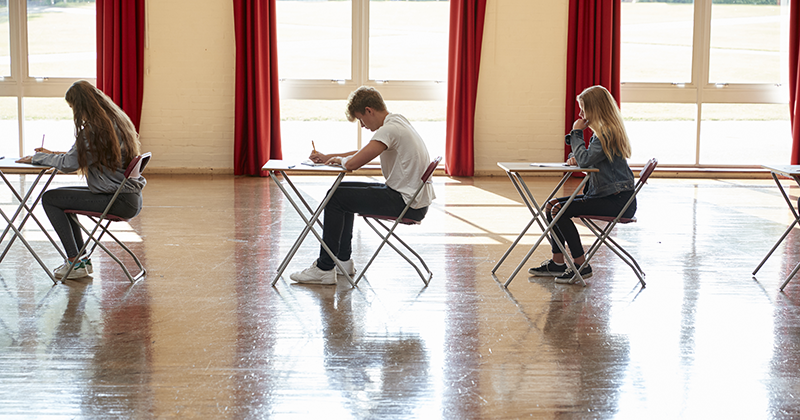The teaching workforce grew by less than 300 teachers last year as record low numbers of newly-qualified staff entered the profession and numbers quitting continued to rise, new school workforce data has revealed.
School workforce statistics show the teacher recruitment and retention crisis is worsening at a critical time for the country, which heads to the polls on July 4.
Here’s what you need to know…
1. Workforce grows by just 259 teachers
Overall, the teaching workforce only grew by 259 full-time equivalent teachers in the year to November 2023, compared to a 2,844 rise the year before.
It means there are currently 468,693 teachers in state-funded schools, up from 468,434.
44,000 teachers joined the workforce, down 3,900 on the previous year.
This drop was driven by a fall in newly-qualified teachers, who made up a smaller proportion of entrants in November 2023 (41 per cent compared to 45 per cent in 2022).
The number of newly-qualified entrants is the lowest since current records began in 2010 – 17,462 in 2023-24 compared to highs of 26,496 in 2015-16.
However, there has been a rise in returners and teachers who qualified more than two years before taking up their first post in a state funded school in England.
The government missed its recruitment target for primary and secondary by 38 per cent this year. The target for secondary was missed by 50 per cent for secondary, and has been missed for 10 out of the last 11 years.
The number of teaching assistants remains at its highest level – 395,585 up from 345,505 in 2011-12.
2. Continued rise in record numbers of teachers quitting
The number of FTE teachers leaving for reasons other than retirement or death remains at a record high of 39,971 – a rate of 8.8 per cent.
Including the other categories, in total 43,522 FTE teachers left last year – which is a slight dip from 43,897 the year before.

The retirement rate is also the lowest since records began – a rate of 0.7 per cent compared to 0.9 per cent in 2021-22 and 3.4 per cent in 2010-11.
The DfE said the changes in working pattern can have an impact on the numbers of FTE teachers.
3. One in 10 new teachers still leaving after a year
The percentage of new teachers leaving a year after qualifying has dropped slightly to 11.3 per cent, compared to 12.8 per cent in 2021. This is still below 13.6 in 2010.
But nearly a third of teachers (32.5 per cent) leave the profession within five years. This compares to 29.2 in 2010.
4. 20% hike in vacancies
Teacher vacancies have more than doubled from 1,098 in November 2020 to 2,802 in November 2023. This is the equivalent of two vacancies per 1,000 teachers three years ago to six per 1,000 last year.
There has been a 20 per cent rise in vacancies between 2022-23 and 2023-24. This compares to 50 per cent last year.

Paul Whiteman, general secretary at NAHT school leaders’ union, said the “alarming” figures were “stark evidence of the recruitment and retention crisis facing our schools and the need for whoever forms the next government to commit to urgent action to address this”.
The number of temporary-filled posts has increased by 10 per cent from 3,308 to 3,655. It now sits at a rate of 0.8 per cent, last seen in 2017-18.
5. Fewer maths lessons taken by specialists
The DfE measures the average percentage of hours a subject is taught by someone who has a relevant qualification above A-level in that subject.
For all subjects, that metric fell again last year to 74.6 per cent, from 75.7 per cent in 2022 and 76.71 the year before.
In maths, the drop was 2.4 percentage points in a year – from 87.2 to 84.8. The biggest drop was in design and technology graphics (3.6 percentage points) and textiles (3.2 percentage points).
6. Sickness days drop but still above pre-pandemic
The number of days lost to sickness absence has dropped from a record high of 3.2 million in 2021-22 to 2.5 million in 2022-23. Pre-pandemic, the figure sat at around two million.
The percentage of teachers who took sick leave dropped from 67.5 to 66.2 last year, but is still way above the 54.1 per cent in 2018-19.
7. Ratios in special and secondary at record highs
Pupil-to-teacher ratios in special schools and pupil referral units continued to rise, hitting a high of 6.5 pupils to one teacher compared to a low of 5.4 a decade ago.
In secondary schools, the ratio has remained static at 16.8, the highest level on record.
Ratios fluctuate at nursery and primary schools, sitting at 20.8 pupils for each teacher this year compared to 20.5 10 years ago. They peaked at 20.9 between 2017-18 and 2019-20.
8. Teacher pay reflects rise
Average salaries have risen by between six and seven per cent – roughly inline with the 6.5 per cent pay rise from last year.
The average salary for a classroom teacher was £43,066, up from £40,251 last year, and £75,331 for headteachers, a rise from £70,831.











